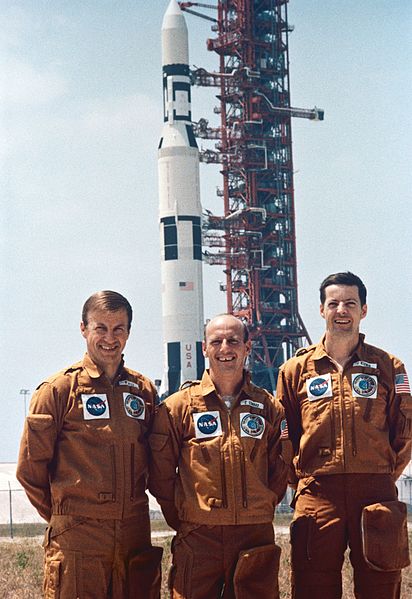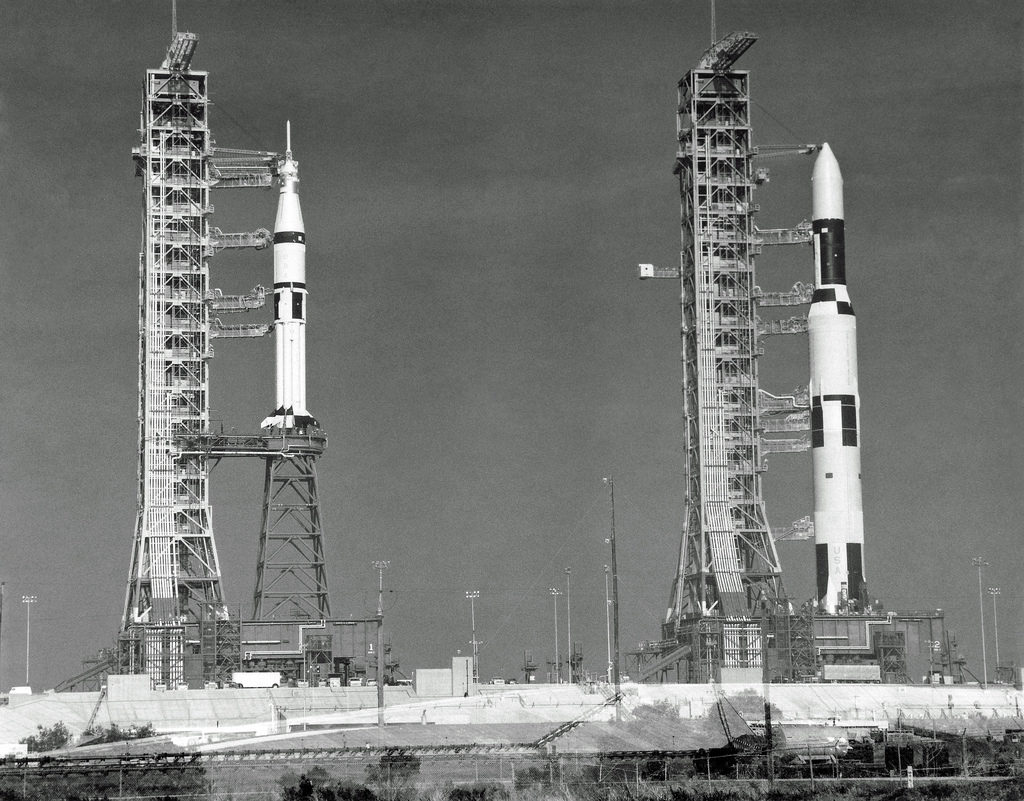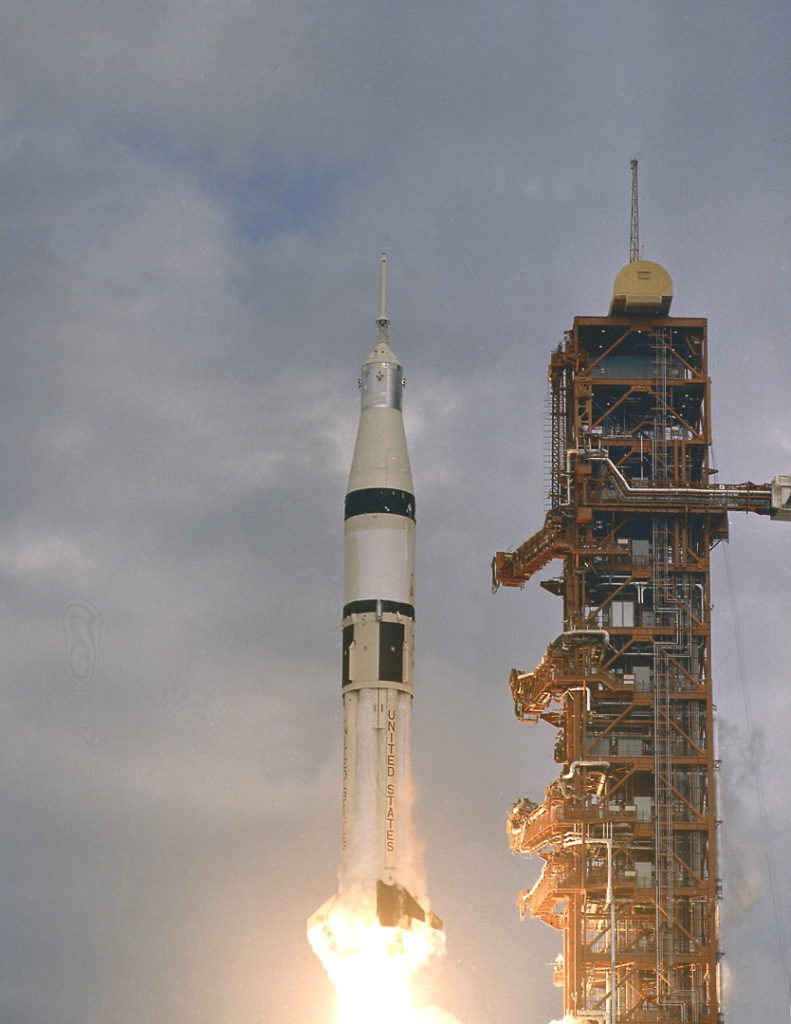On May 25th, 1973, the first manned mission to the United States first space station, Skylab, launched from Launch Complex 39-B at Kennedy Space Center. Originally scheduled to launch 10 days earlier, on May 15th, the launch was delayed when it was discovered that Skylab had suffered major damage on its way to orbit; the mission of Skylab 2 being changed from that of just a simple 28 day stay in orbit to one that would start off with a seemingly impossible task – repairing a crippled space station!
The equipment they would need was packed into the relatively tiny Command Module; a cutting device to free the damaged Solar Wing, and 2 sun shades, one “parasol” type designed to expand out of a scientific airlock, and another to be strapped to the space station much like a tarp over a campsite — both of these designed to protect the Orbital Workshop from the intense heat of the sun.
Skylab 2 also carried additional supplies to replace those which were launched with the station, but were suspected to have been damaged by the increased temperatures in the station due to loss of the micro meteoroid shield. There was fear that toxic gasses might also be present as a side effect of the heat breaking down some substances on the station, so gas masks were provided for the crew when they first entered the station.
With all this equipment put on board, and plans on how to repair the station having been practiced as best they could be on Earth given the limited time and limited information on what was actually wrong with the station, the Skylab 2 crew of Pete Conrad, Joe Kerwin, and Paul Weitz, were ready.

The Skylab 2 crew: left to right, astronaut Paul J. Weitz, pilot; astronaut Charles Conrad Jr., commander; and scientist-astronaut Joseph P. Kerwin, science pilot. The Skylab Space Station is seen in the background on its Saturn V launch vehicle.
With the call out of “Skylab 2, we fix anything” the Saturn IB launch vehicle cleared the tower, carrying the Apollo CSM, and its crew, to an ambitious repair mission, not knowing for sure just how bad things would be.
An interesting, albeit terrifying, issue occurred at ignition of the booster – when the “commit” signal was sent to the Saturn IB, telling it to begin its programmed operations, the Saturn Instrument Unit, the brain of the Saturn IB booster, sent a signal to the electrical systems of the rocket to switch from internal to external power. The Saturn IB during flight, of course, is no longer connected to the external power supply at the pad. This would have lead to a booster that was uncontrollable, and been an immediate abort scenario.
Thankfully, the cutoff signal was sent for less than a second – too little time for the relay in the Saturn IB to trip, meaning the booster stayed on internal power and operated normally during its flight. Another event you would never know happened unless someone told you, but something that still could have jeopardized the entire mission at the moment of ignition!
I’ve, of course got quite a bit more to write about Skylab 2. For now, let’s focus on the launch of the mission. There isn’t too much in the way of good footage that I can quickly find, sadly, so I’ll share what I can – this ABC news footage of the launch, in all its dark black and white glory, and another video showing a bit of launch and some of the first fly-around of the station.
Enjoy!
https://en.wikipedia.org/wiki/Skylab_2


